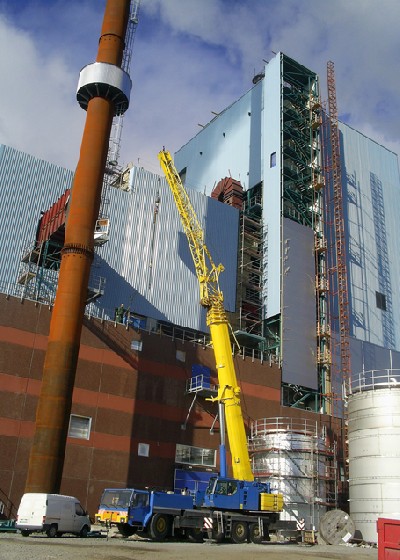Set against the points in favour of outsourcing are the risks involved. Can the outsourcing supplier be trusted to provide the quality, consistency, capability and availability of resource that is required? Will he be able to meet overall agreed objectives? What safeguards are there if he suddenly stops trading?
The conflicting arguments for and against outsourcing has led the Richard Alan Group, a specialist in site maintenance contracts, to identify and analyse the key determinants in the process. These relate to both financial and personnel issues and also highlight the problem of longer term viability for enterprises without some form of outsourcing.
Probably the main driver in the move to outsourcing is the need across all companies to improve their use of capital. The requirement in many businesses to hold large asset values in the shape of spare parts is not an efficient use of capital. However, a specialist outsourcing company will reduce these costs by identifying mains areas of risk, and by undertaking to hold critical spares locally on a 24/7 basis.
The second major driver is the continuing pressure in all market sectors to reduce overheads. The benefit of outsourcing contracts is that they are costed and agreed at the outset, providing certainty for client companies in terms of the overhead they present.
In contrast, the departments within companies that provide in-house site maintenance management have a financial interdependency that evolves over time. This makes it difficult to apportion overhead and difficult to measure each sector with accountability and transparency.
Of course, even before the accountability and transparency of in-house departments can be assessed, there has to be the skilled personnel available to man them. Unfortunately there is a major skills shortage plaguing British industry: the third major factor directing companies to an outsourcing solution. There are just not enough trained fitters and maintenance engineers to go round; and finding and keeping staff with the necessary electrical and mechanical skills to maintain large and diverse concentrations of plant and machinery and site facilities is becoming extremely difficult. Moreover, even if companies are able to harness the skill levels required, they are unlikely to be able to deploy them on a 24/7 basis, as is the case with outsourcing contractors.
The shortage of skills is a problem of the short term, in that it is with us now. However, it is not likely to go away in the near future, bringing longer term problems for companies needing to evolve their operations in order to survive in today's fast developing markets. The problem can be addressed with outsourcing, as personnel with the required levels of skills can be deployed in the relevant areas and in the relevant numbers without long term commitment on behalf of the outsourcing client. This provides the flexibility to achieve change without diversion of the precious resources required to maintain competitiveness in the short term.
Last but not least in the list of outsourcing drivers is the requirement for integration of responsibility across site services. Modern companies employ a diverse and bewildering range of everyday services that are individual entities and therefore difficult to manage centrally. However, by employing a specialist site maintenance outsourcer these services can be integrated into one consolidated package, providing the convenience and cost savings benefits of a single source responsibility across all contracted-out facilities.
Reliable Partnerships
Having evaluated the potential benefits of outsourcing, and made the decision to proceed, the next - and most important - step is to choose a reliable partner; one with a proven track record of successful implementations of site maintenance contracts. In addition, the partner should be a specialist in the widest range of services; for example, the Richard Alan Group provides steelwork and pipework installation and maintenance capabilities, electrical and instrumentation, vessel manufacture and installation, pump and gearbox supply and repair, precision machining, hazardous area specification and maintenance, cleaning and treatment equipment and hydrostatic testing and inspection in its site maintenance package. Importantly, Richard Alan also acts as site principal for the execution of site health and safety, as well as providing supervision of contractors in any project size - the largest current project being in excess of £1.3m.
The use of such specialists to act as a company"s site maintenance partner, allows enterprises to focus their energies on core strategic responsibilities. They are relieved of the burden of basic day- to- day administration tasks, and the many pressures associated with procuring capital projects or managing site service resources on a daily basis across single or multiple sites. These responsibilities are integrated into an agreed plan, which offers enterprises the security of key performance indicators and reporting schedules - and the simplicity of one contact, one invoice and - importantly - one result.
For further information please visit: www.ragroup.com






